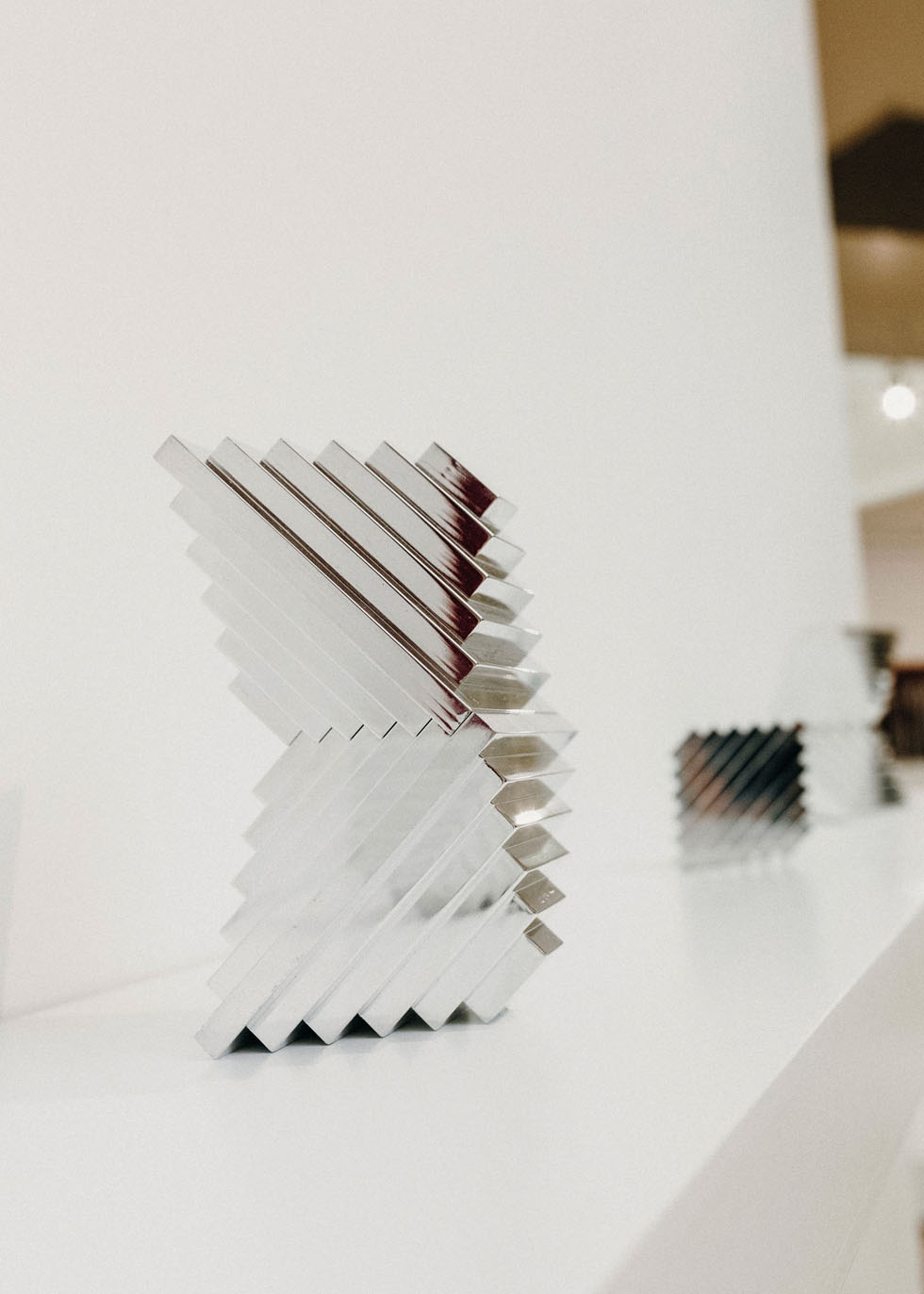On now, Dagmar Vaikalafi Dyck and Sopolemalama Filipe Tohi’s exhibition ‘Amui ‘i Mu‘a: Ancient Futures at Te Whare Toi o Heretaunga Hastings Art Gallery is a chance to see two stars of Tongan contemporary art aligning. With previous iterations presented in Nuku‘alofa and Tāmaki Makaurau/Auckland, it surveys the work of both artists from the 1990s onwards. Part of a bigger research project exploring the legacies of customary Tongan art practices — textiles, weaving, carving and lashing — it firmly locates art-making within processes of making home and community, and maintaining connections between the past and future.

The foundations for this exhibition were laid in 2017, when along with a group of other researchers and knowledge-holders, the pair were awarded a prestigious Marsden Fund research grant. With this support, they travelled to different parts of the world to engage with treasures from the Kingdom of Tonga in international museum collections. Dagmar says that for them, this was “spiritual”. “It’s emotional, because many of the objects that we were in contact with aren’t being made anymore, or we’ve lost the knowledge around their origins and their purpose.”
Dagmar and Filipe’s group sought to reconnect with the material culture held far away from Tonga behind closed doors, and to find new ways of sharing and celebrating it. The generosity and collaborative nature of this approach fits the way both artists have made and shown their work for decades.



Recently named a 2023 Arts Foundation laureate, Filipe has worked as an artist for more than 30 years. As a young man in 1978, he immigrated to New Zealand and settled in Ngāmotu/New Plymouth. He learned carving in the Taranaki style at the Rangimārie Māori Arts & Crafts Centre, developing his own sculptural language influenced by Tongan and Māori traditions.
This exhibition showcases several of Filipe’s works from his Taranaki days. Alongside these, the more recent works Four Kali (2021) pay tribute to Tongan headrests, following their traditional shapes, scale and materials of wood, coconut sennit (woven fibres) and bone. Though they are some of his smallest sculptures in the exhibition, they have a powerful presence and intimacy. Made to cradle the head like pillows, they’re literal and metaphorical supports for memories, respite and comfort.
Ever-present throughout decades of Filipe’s work is an exploration of lalava, the traditional technique of lashing together materials with sennit. Haukulasi (2008-09), one of Filipe’s “wool paintings”, is a mesmerising example of the lalava lashing pattern. Strands of dyed, everyday yarn are woven together to show an interlocked, gridded system. The diamond-shaped forms within this pattern are the building blocks for many of Filipe’s sculptures and paintings. He describes lalava as a “fibre system of knowledge”, resembling the double-helix structure of DNA — the blueprint for life. For him, the pattern is a way of thinking about the most profound and fundamental forms of connection across generations.



Dagmar’s prolific, interdisciplinary practice has a similar central theme in koloa, customary Tongan women’s textile art. She grew up in Tāmaki Makaurau/Auckland with a Tongan mother and German father, and became the first woman of Tongan descent to complete a postgraduate degree at Elam School of Fine Arts (‘Amui ‘i Mu‘a includes early prints from her art-school days). Her contribution to Pacific art and education since then is significant — she taught at Tāmaki Makaurau/Auckland’s Sylvia Park School for 10 years and remains an active advocate and researcher within the education system.
In ‘Amui ‘i Mu‘a, the full breadth of Dagmar’s making is on display — from collaboratively woven kiekie (waist garments), to layered, airbrushed and stencilled paintings that deconstruct motifs from traditional koloa. The work Seven Sisters (2019), a cascading floor-to-ceiling installation of prints on paper, is a compelling focal point, resembling scrolls of mid-century wallpaper. Dagmar’s father worked in interior design, so she spent her childhood surrounded by wallpaper and paint, leaving a lasting influence visible in her reference to Irish designer Orla Kiely’s classic Stem print. Immediately recalling the domestic environment, as well as the great lengths of ngatu (Tongan barkcloth) rolled out on significant occasions, Seven Sisters alludes to the role of koloa in family and community relationships. The title acknowledges the Matariki star cluster and the sisterhood of making; groups of women work together to craft koloa and this process gives these artworks meaning, as do the acts of giving and receiving them on special occasions.
‘Amui ‘i Mu‘a is a celebration of traditional design and making, and the many roles of customary art practices within Tongan life and society. It’s an opportunity to experience two artistic practices coming together to uplift the past, present and future of Tongan art. Dagmar describes it as a “reciprocal way of working and collaborating. It’s not finished — this is just an ongoing conversation, it’s not like this project has ‘arrived’. We continue to push and pursue, and that comes through meeting new people in our communities who will add to the conversation.”
dagmardyck.com; lalava.net
‘Amui ‘i Mu‘a: Ancient Futures is on until November 5, 2023. For more info, visit hastingscityartgallery.co.nz.
Words Sophie Davis
Photography Putaanga Waitoa

